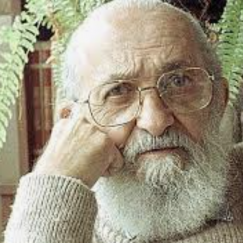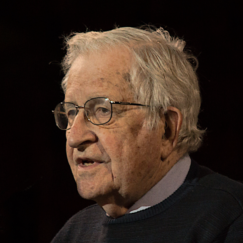The opportunistic teacher who embraces the leisure interests of his pupils in the hope of leading them to higher things is as frequently unsympathetic to the really valuable qualities of popular culture as his colleague who remains resolutely hostile. A true training in discrimination is concerned with pleasure.
Bio/Short Description
John Dewey was an American philosopher, psychologist, and educational reformer whose ideas have been influential in education and social reform.
Dewey is one of the primary figures associated with the philosophy of pragmatism and is considered one of the fathers of functional psychology. A Review of General Psychology survey, published in 2002, ranked Dewey as the 93rd most cited psychologist of the 20th century. A well-known public intellectual, he was also a major voice of progressive education and liberalism.
Although Dewey is known best for his publications about education, he also wrote about many other topics, including epistemology, metaphysics, aesthetics, art, logic, social theory, and ethics. He was a major educational reformer for the 20th century. The overriding theme of Dewey's works was his profound belief in democracy, be it in politics, education or communication and journalism.
HOW THEY INFLUENCED YOU?
External Links
Other Grandparents
 Marlon Posted By: Renee HobbsOn:11/29/2023 - 00:56
Marlon Posted By: Renee HobbsOn:11/29/2023 - 00:56
 danahPosted By: Yonty FriesemOn:01/06/2023 - 07:34
danahPosted By: Yonty FriesemOn:01/06/2023 - 07:34
 PaoloPosted By: Renee HobbsOn:07/22/2021 - 16:11
PaoloPosted By: Renee HobbsOn:07/22/2021 - 16:11
 NoamPosted By: Renee HobbsOn:05/23/2020 - 03:48
NoamPosted By: Renee HobbsOn:05/23/2020 - 03:48
 Jon Posted By: Renee HobbsOn:05/10/2020 - 00:12
Jon Posted By: Renee HobbsOn:05/10/2020 - 00:12



Frank Romanelli
John Dewey wrote, “If we teach today’s students as we taught yesterday’s, we rob them of tomorrow.”
It didn't take me long in the first year of my teaching to realize how ineffective and futile it was to teach anything that wasn't relevant to my students. On that day, I made a contract with my students that I have never broken, "If you don't understand why you should learn or do something in this class, ask me. If I don't give you a satisfactory answer, we won't do it." I also learned early in my career that authentic learning was relationship based which is why I need to tell you about my other digital media literacy grandparent, my actual maternal grandfather, Nash.
My grandfather, Nacenzio Viccione, was a jewelry maker in Providence. He was also a self-educated engineer, who often lamented about his missed opportunity to go to college because of his family's need for him to work. I was his first and favorite grandchild. We would often discuss life and learning while sitting at the kitchen table or while I was helping him with plumbing, electrical wiring, or carpentry.
When I was in middle school, Nash bought me a slide rule. I never learned how to use it. When I graduated from high school, he bought me my first personal computer, a Tandy Color Computer II. He insisted that I needed to learn programming language (then it was DOS). When I started college, he would argue with me that computers were the future and that I was wasting my time being an English major. I would reply with, "So who's going to write that newspaper you read when you get home from a day of playing with your zeroes and ones?" Now whenever I present and tell that story I add, "I don't see any newspapers in this room, but most of you have a computer in front of you." I guess Nash won the argument.
My grandfather's words stuck. My first DOS creation was a simple grade averaging program. As I began teaching, I always looked to make the digital connection. In 1987, I worked with a group of seniors publishing their original writing in a compilation they created using the math department computer lab, the only computers and word processing software available in the school. In 1990, I had four computer writing stations in my middle school language arts classroom. Students would hover around them during their peer conferences sharing their word-processed work and using CompuServe (the only internet service available at the time) as a resource.
My own digital media literacy has continued to evolve; by default, so has my students'. I challenge them in all my teaching to be current and to discover how media, specifically digital media are integral to their writing and to their life. Dewey's published work combined with Nash's experiential teaching make them both my digital media literacy grandparents. I don't remember if I ever talked to my grandfather about Dewey as I studied him as a freshman in college, but it's more than likely.
When my grandfather was diagnosed with lung cancer he did three significant things: he retired, took my grandmother on a second honeymoon to Italy, and enrolled in computer science classes at Rhode Island College. He attended for as long as he was able. I was also grateful that he lived long enough to see me graduate. I still don't know how to use the slide rule; but I am adept in digital media literacy.
ralphbeliveau
Dewey is a bridge between so many fundamental ideas in the development of American thinking, from education to philosophy to critical thinking.
Jeremiah Dyehouse
I am proud to claim Dewey as an intellectual grandparent, and I have come to believe that his work holds special importance for students of digital and media literacy. In this essay, I seek to illustrate what I take to be one of Dewey’s most pertinent insights for the field’s contemporary inquirers: that shared understanding is not the cause of but rather a result of successful cooperations in action.
My own life experience has colored my views on Dewey’s media thinking. Intellectually, I came of age in the mid-1990s. I remember sitting down to use the world’s first popular web browser, NCSA Mosaic, in the basement of my college’s library building, a few paces from the couch where I read Walter Benjamin’s (1969) “The Work of Art in The Age of Mechanical Reproduction.” Mosaic was a revelation. After having contended with DOS and VAX command lines, this program seemed a qualitatively better way to access computer networks. Like the hypertext software on which it was built, Mosaic allowed its users to follow links between page-like “documents” stored on different computers. (Mosaic also added support for inline images, which was an important feature for many users.)
As a child who grew up with console-based video games, I remember my fascination with the open-ended, exploratory, and emergent qualities of the early World Wide Web. Not only did my screen connect with others around the globe, but I could add to the collection of documents that others could browse. To me, Mosaic manifested how media literacy could be more than the watching, reading, and playing I had previously known.
Just over a century before, Dewey was coming to his own fin de siècle enthusiasm for communications technology. As a young professor at the University of Michigan, Dewey’s interests ranged widely across psychology, ethics, and politics, and they also included attention to developments in mass writing and communication. In 1891, Dewey wrote his colleague William James about a scheme he was hatching with former journalist and newspaper editor Franklin Ford and a group of Ann Arbor academics. In an explanation of what conversations with Ford had meant to him, Dewey (1999) shared the following prediction: “I believe that a tremendous movement is impending when the intellectual forces which have been gathering since the Renascence & Reformation shall demand complete free movement, and, by getting their physical leverage in the telegraph & printing press shall through free inquiry in a centralized way, demand the authority of all other so-called authorities.”
Building on ideas about what writing technologies like the telegraph and the printing press could accomplish, Dewey, Ford, and the others proposed to publish a new, philosophical kind of newspaper. This newspaper, to be called Thought News, was meant to stimulate individuals’ awareness of our interconnectedness in what the group called the “social organism.” The group also hoped that it would stimulate a reorganization of the existing global news industry. As Dewey and Ford believed, this broad change in news gathering and news publication would begin a worldwide democratic transformation of economic, political, and social activity.
Like the 1890s, the 1990s saw more than its share of visionary technology projects. When I was a graduate student, the project that particularly caught my attention was one that built on the successes of programs like Mosaic. Proponents of the Virtual Reality Modeling Language (VRML) argued that although the establishment of web pages gave computer networks a user interface drawn in two dimensions, what humans really needed was an interface built in three dimensions. Through the Web3D Consortium, work continues today on standards for sharing three-dimensional graphics on the World Wide Web. VRML, first specified in 1994, was the first major attempt to network these data types. For their part, VRML’s proponents proposed that we should experience the web not on pages but in virtual worlds. VRML’s main public advocate, Mark Pesce, suggested potentially far-reaching benefits for a “world”-based web interface, including fundamental changes to the Internet and improvements to democratic participation (Dyehouse 2009).
As it happened, however, this virtual world-building technology came to little. The project suffered from problems related to the slow data-transfer rates characteristic of dial-up connections. In addition, VRML users struggled to know what to do with the technology. I remember feeling genuinely disappointed to realize that VRML would not catalyze the broad technical, social, and political changes for which I had hoped. In retrospect, of course, I see that my expectations for a virtual reality-based World Wide Web were not just unrealistic but impossible. At the time, however, the world seemed precisely this one technology short of radical transformation.